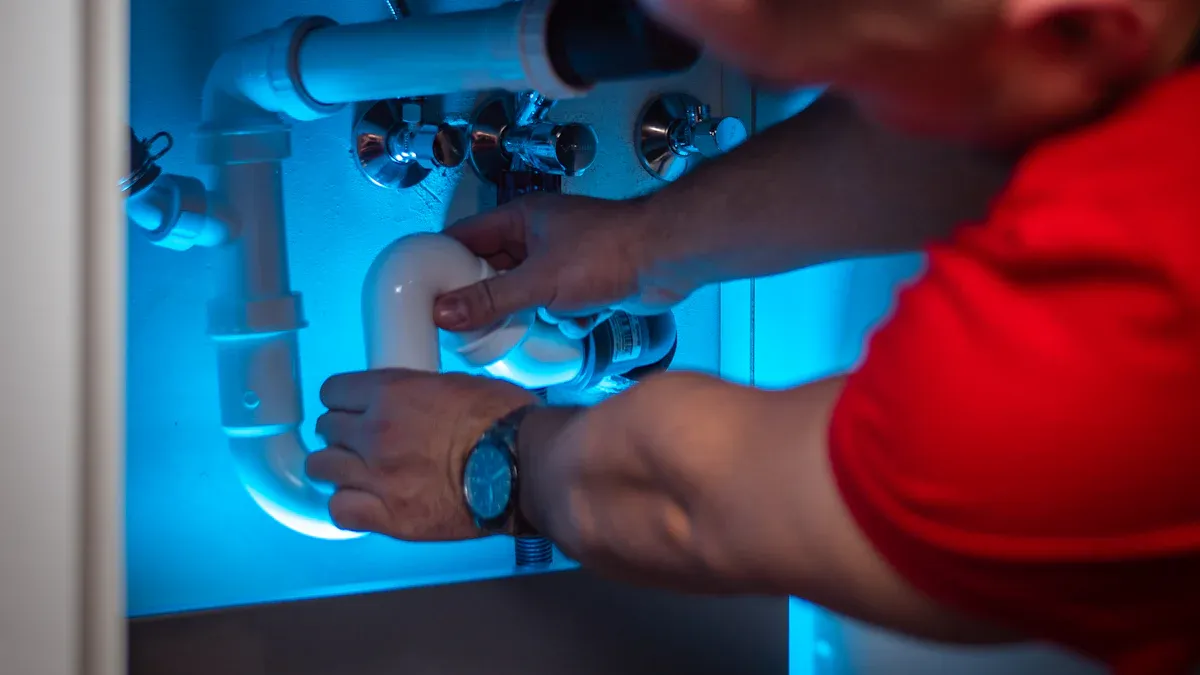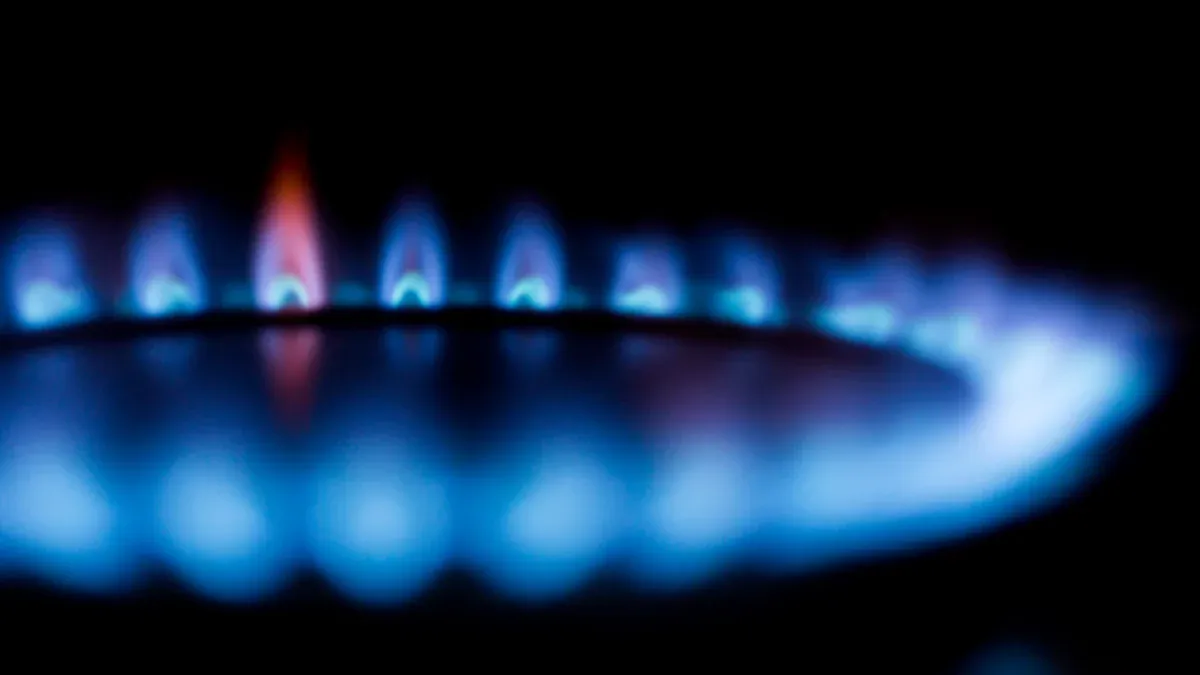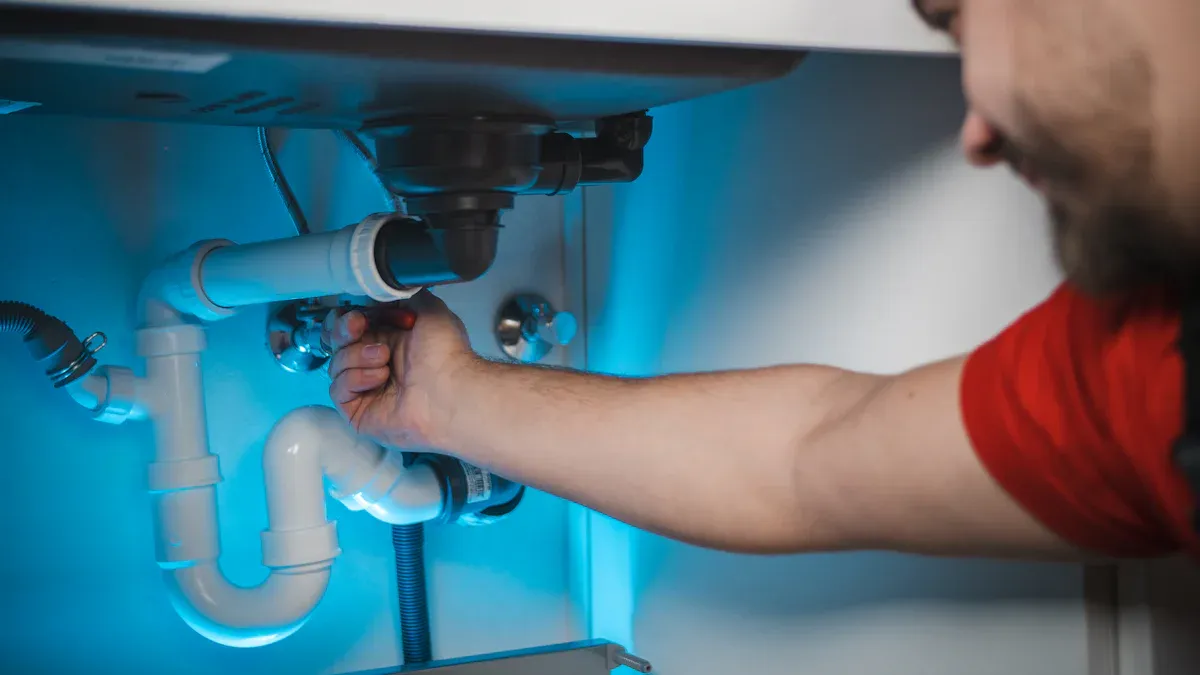
You rely on your gas dryer to deliver efficient drying performance, and the 加熱エレメント plays a central role in this process. In gas dryers, the heating element ignites gas to create heat, which then dries your clothes. Leading 発熱体メーカー、 のような 金中電熱, design 家電製品の加熱素子 that ensure consistent results. Without a functional gas dryer heating element, your dryer cannot produce the necessary heat for effective operation.
How Gas Dryer Heating Elements Work in Gas Dryers

Understanding how your gas dryer operates helps you maintain it and troubleshoot issues effectively. The heating process in a gas dryer relies on several key components that work together to deliver efficient drying performance.
Key Components of a Gas Dryer Heating Element
You will find that the main parts of a dryer responsible for heating include the igniter, flame sensor, and gas valve. Each component plays a specific role in the heating cycle.
イグナイター
The dryer igniter acts as the starting point for the heating process. When you turn on your gas dryer, the igniter receives an electrical current. It heats up rapidly and glows, reaching a temperature high enough to ignite the gas. This component ensures that the gas burner lights safely and efficiently every time you start a drying cycle.
Flame Sensor
The flame sensor monitors the presence of a flame inside the burner assembly. Once the igniter lights the gas, the flame sensor detects the flame and signals the control board to keep the gas valve open. If the sensor does not detect a flame, it will shut off the gas supply to prevent unburned gas from accumulating. This safety feature protects both you and your appliance.
Gas Valve
The gas valve controls the flow of gas into the burner. When the control board receives the correct signals from the igniter and flame sensor, the gas valve opens. Gas flows into the burner, where it mixes with air and ignites. Gas valve solenoids regulate this process, ensuring that the right amount of gas enters the burner for optimal heating.
注: The main components of a gas dryer heating element include the gas burner, gas valve solenoids, and the airflow system. The gas burner produces heat, the solenoids control gas flow, and the airflow system circulates warm air into the drum for efficient drying.
The Heating Process in Gas Dryers
The heating process in your gas dryer involves a precise sequence of events that ensures safe and effective operation.
Ignition Sequence
When you start a drying cycle, the igniter receives power and begins to glow. Once it reaches the required temperature, the gas valve opens, allowing gas to flow into the burner. The igniter lights the gas, creating a steady flame. The flame sensor then confirms ignition and keeps the gas valve open as long as the flame remains present.
Heat Generation and Airflow
After ignition, the gas burner generates heat. The airflow system, which includes a blower, circulates this warm air through the drum. As the heated air moves through the drum, it absorbs moisture from your clothes and exits through the vent. This process continues until the drying cycle completes.
- Gas dryers generate heat using natural gas or propane.
- The flame from the electric ignition heats the air, which is then circulated by a blower.
- The airflow system ensures that warm air reaches every part of the drum for even drying.
You benefit from this design because gas dryers typically operate more efficiently than electric models. They use less energy and dry clothes faster, which can reduce your utility costs over time.
Safety Features in Gas Dryer Heating Elements
Modern gas dryers include several safety features to protect you and your home.
Automatic Shutoff
Your gas dryer uses high limit switches at the heating element to prevent overheating. If the temperature inside the dryer exceeds safe levels (around 120°C), these switches cut off power to the heating system. This automatic shutoff feature helps prevent fires and equipment damage.
Temperature Regulation
The dryer drum acts as a fire barrier, slowing the spread of fire in case of malfunction. The control system constantly monitors temperature and airflow, adjusting the heating cycle as needed. If the flame sensor fails to detect a flame, the gas valve closes immediately, stopping the flow of gas and reducing the risk of accidents.
ヒント Always ensure proper ventilation for your gas dryer. Gas dryers require venting to remove combustion by-products and maintain safe operation.
By understanding these components and processes, you can better appreciate the importance of regular maintenance and prompt repairs. A well-maintained gas dryer heating element ensures safe, efficient, and reliable drying performance.
Gas Dryer Heating Element vs. Electric Dryer Heating Element
Differences in Operation Between Gas and Electric Dryers
Heat Source Comparison
You encounter two main types of dryers in the market: gas and electric. The heat source sets them apart. Gas dryers use natural gas or propane to generate heat, while electric dryers rely on electrical resistance coils. You notice that gas dryers heat up quickly, which reduces drying times. Electric dryers require significant electrical power and take longer to reach optimal temperatures.
- Gas dryers provide faster heating and lower operational costs.
- Electric dryers consume more energy and often cost more to operate.
- Commercial settings prefer gas and propane for their efficiency in high-volume drying.
エネルギー効率
You want an appliance that saves energy and money. Both gas and electric dryers perform well, but gas dryers stand out in areas with high electricity rates. Consumer reports show that about 85% of gas dryers receive excellent or very good scores, matching electric models in overall efficiency. You benefit from lower operational costs when you choose a gas dryer, especially if your region has expensive electricity.
- Gas dryers offer cost-effective drying in many regions.
- Electric dryers match gas models in performance but may cost more to run.
Dryer Maintenance and Longevity
Wear and Tear Factors
You extend the life of your dryer by understanding common wear points. Gas dryer heating elements experience wear due to several factors:
- Igniters create sparks for heat. Malfunctions cause immediate heat loss.
- Radiant flame sensors monitor the pilot flame. Failure stops heating for safety.
- Control valves regulate gas flow. Malfunctions prevent heating elements from working.
Regular inspection helps you catch these issues early.
交換頻度
You want your dryer to last. Maintenance practices for gas dryers include inspecting the heating element for cracks or corrosion, checking the burner assembly for proper igniter function and flame color, and descaling the heating element to prevent mineral buildup. These steps reduce the need for frequent replacements and keep your dryer running efficiently.
Cost Considerations for Gas and Electric Dryers
Initial Investment
You compare prices before buying a new dryer. A mid-range electric dryer costs about $400 to $600. A mid-range gas dryer ranges from $500 to $750. On average, you pay $100 more for a gas dryer of similar style and quality.
- Electric dryer: $400–$600
- Gas dryer: $500–$750
Ongoing Expenses
You consider long-term costs when choosing a dryer. The table below shows the average cost per load over five years:
| 乾燥機の種類 | Cost per Load |
|---|---|
| ガス乾燥機 | $0.217041 |
| Electric Dryer (High Rate) | $0.384832 |
| Electric Dryer (Low Rate) | $0.289447 |
| Cost Difference | $0.168/load |
You save money with a gas dryer over time, especially if you do many loads each week.
Tip: Regular maintenance and smart purchasing decisions help you maximize savings and extend the life of your dryer.
Common Problems with Gas Dryer Heating Elements
You depend on your gas dryer for reliable performance, but certain issues can disrupt its operation. Recognizing the most frequent gas dryer problems helps you address them quickly and maintain efficient drying.
Signs of a Faulty Dryer Heating Element
You notice several warning signs when your dryer heating element begins to fail. These symptoms often point to underlying gas dryer problems that require attention.
洗濯物がきちんと乾かない
You may find that your clothes remain damp after a full cycle. This issue often signals that the heating element or burner is not generating enough heat. Inefficient drying can result from a faulty igniter, a blown thermal fuse, or restricted airflow.
Dryer Not Getting Hot
You expect your gas dryer to produce consistent heat. If the dryer drum feels cool or the air inside lacks warmth, the heating system may have failed. Problems with the igniter, flame sensor, or gas valve can prevent the burner from igniting, leaving your dryer unable to reach the required temperature.
Unusual Noises or Smells
You should pay attention to strange sounds or odors during operation. Squeaking, grinding, or a burning smell often indicate mechanical or electrical issues. These symptoms may arise from a malfunctioning motor, worn bearings, or overheating components.
ヒント If you detect a burning smell, stop using your dryer immediately and inspect for overheating or electrical faults.
The table below summarizes the most frequently reported gas dryer problems according to appliance repair statistics:
| Problem Type | 説明 |
|---|---|
| 加熱エレメント | A wire coil in an electric dryer or a burner in a gas dryer. |
| 温度ヒューズ | Prevents overheating, significant issue in gas dryers. |
Troubleshooting Gas Dryer Heating Element Issues
You can resolve many gas dryer problems by following systematic troubleshooting steps. These techniques help you identify faulty components and restore proper heating.
目視検査
You start by examining the dryer for obvious signs of damage. Look for burnt wires, cracked igniters, or loose connections. Check the vent system for blockages that restrict airflow and cause overheating.
Testing Components
You use a multimeter to test key parts for continuity and resistance. Follow these troubleshooting steps to pinpoint the source of the problem:
- Check the igniter for continuity; replace if necessary.
- Test the thermal fuse for continuity; replace if blown and check the vent system.
- Set the dryer to a heat-required setting and observe the igniter’s glow.
- If the igniter glows but no flame ignites, check the flame sensor.
- If the igniter glows briefly and then goes out, test the gas valve coils for resistance.
- Test the cycling thermostat for continuity; replace if faulty.
- Check the centrifugal switch for continuity; replace if necessary.
- If issues persist, test the timer assembly for voltage before considering replacement.
- Finally, check the gas valve relay on the control board if all else fails.
You improve dryer performance by addressing these issues promptly and ensuring each component functions correctly.
When to Call a Professional for Gas Dryer Repairs
You may encounter gas dryer problems that require expert attention. Certain signs indicate that professional repair is necessary for safety and efficiency.
Complex Repairs
You should seek help if you experience long drying times, the drum does not spin, or you hear strange noises such as squeaking or grinding. These issues often involve multiple components and require specialized tools and expertise.
Safety Concerns
You must prioritize safety when dealing with gas dryers. If you notice a burning smell or suspect overheating, stop using the dryer and contact a qualified technician. Handling gas appliances without proper training can lead to fire hazards or gas leaks.
Always consult a professional for repairs involving gas lines, electrical systems, or persistent dryer heating element failures.
Dryer Maintenance Tips for Gas Dryer Heating Elements
Proper dryer maintenance keeps your appliance running efficiently and safely. You can prevent many common issues by following a regular cleaning schedule and performing preventive checks on the parts of a dryer. These steps help you avoid costly repairs and extend the life of your gas dryer.
Regular Cleaning for Gas Dryers
Routine cleaning is essential for optimal performance. You should focus on two main areas: the lint trap and the vent system.
Lint Trap Maintenance
必要がある clean the lint filter before or after every cycle. A clogged lint trap restricts airflow, which can cause overheating and damage to critical components like the heating element. Use a dryer vent brush or a vacuum with a narrow attachment to remove lint from the trap area that the screen does not catch. This simple habit reduces fire risk and helps your dryer work efficiently.
Vent and Duct Cleaning
You should check the dryer vent and ducts regularly for obstructions. Lint buildup in these areas can lead to overheating and even fires. Use a vent cleaning brush or a vacuum attachment to clear out lint from the vent pipe. Schedule annual professional maintenance to thoroughly clean the internal parts and inspect for hidden issues. This step ensures proper airflow and prevents unexpected breakdowns.
Tip: Many dryer fires start in the exhaust channel, away from the appliance itself. Always turn off your dryer before leaving home.
Preventive Checks for Gas Dryer Heating Elements
Preventive checks help you catch problems early and keep your gas dryer running smoothly.
Inspecting Connections
You should inspect all electrical and gas connections as part of your maintenance routine. Look for signs of wear, corrosion, or loose fittings. Annual inspections are required by code and should include checking the electric heating element for contamination, distortion, and correct positioning. Quarterly checks should focus on belts and motors, as these parts indirectly affect the performance of the heating system.
Monitoring Performance
You need to monitor your dryer’s performance throughout the year. Watch for changes in drying times, unusual noises, or inconsistent heat. These signs may indicate issues with the flame sensor or other key components. Addressing small problems early prevents larger, more expensive repairs later.
Safety Precautions for Gas Dryer Maintenance
Safety must always come first when you perform dryer maintenance. Gas dryers require special care to avoid hazards.
Handling Gas Appliances
Before you begin any maintenance, unplug your dryer and shut off the gas supply. Test your smoke alarms and carbon monoxide detectors regularly, especially if you use gas dryers. Keep a fire extinguisher in your laundry area and know where your dryer’s emergency shut-off is located, usually in the breaker box.
火災の危険を避ける
You should clean the lint trap after every load and use a vent brush to reach areas the screen misses. Install a smoke detector in your laundry area and test it often. Avoid overloading your dryer, as this can reduce airflow and increase wear on the element. If you ever smell smoke or see sparks, unplug the dryer or flip the circuit breaker and call a professional. If a fire occurs, evacuate and let emergency services handle the situation.
注: Adding dryer cleaning to your home maintenance list helps prevent fires and keeps your appliance working safely.
Repairing or Replacing a Gas Dryer Heating Element

When to Repair or Replace Your Gas Dryer Heating Element
永続的なパフォーマンスの問題
You may notice your dryer struggles to dry clothes, takes longer than usual, or fails to heat properly. These persistent performance issues often signal trouble with the heating element or other critical parts of a dryer. If you have already tried basic troubleshooting and the problems continue, you need to consider whether repair or replacement is the best option.
Visible Damage
You should inspect your dryer for visible damage. Cracks, corrosion, or burnt marks on the dryer igniter, flame sensor, or heating element indicate that replacement may be necessary. Physical damage can compromise safety and efficiency, making repairs less effective.
ヒント Use the table below to help decide whether to repair or replace your gas dryer heating element.
| 要素 | Repair Considerations | Replacement Considerations |
|---|---|---|
| Age of Appliance | Under 5 years with first major issue | Over 8 years with major component failure |
| Cost of Repair vs Replacement | Repair cost under 40% of replacement price | Repair costs exceeding 50% of replacement price |
| Frequency of Repairs | No recurring problems or multiple recent repairs | Multiple repairs needed within 12-24 months |
| Safety Concerns | No safety hazards present | Safety hazards like electrical burns or gas leaks |
| エネルギー効率 | Older appliances consume more utilities | Modern alternatives are more energy efficient |
| Environmental Considerations | Repair reduces landfill waste | Extremely inefficient appliances may consume more resources in the long run |
DIY vs. Professional Gas Dryer Repairs
Tools and Skills Needed
You need basic hand tools, a multimeter, and knowledge of the parts of a dryer to attempt DIY repairs. You must understand how to safely disconnect gas and electricity before working on the heating element or dryer igniter. If you lack experience, you may find troubleshooting and repairs challenging.
Risks and Benefits
You should weigh the pros and cons before deciding to repair your dryer yourself or hire a professional. The table below outlines key differences:
| アスペクト | DIY修理 | プロフェッショナルなサービス |
|---|---|---|
| コスト | 初期費用の削減(部品のみ) | コストが高くなる(部品代+人件費+サービス料がかかる可能性あり) |
| 必要なスキル | 経験と適切なツールが必要 | 専門技術者があらゆる面を担当 |
| 時間 | 時間がかかり、困難になる可能性がある | より早く完了し、時間を節約 |
| リスク | エラーや安全上の危険のリスクが高まる | リスクの低減、適切な診断と設置 |
| 満足 | 修理成功による個人的な満足感 | 保証された作業で安心 |
| 保証 | 間違いがあった場合、保証が無効になる場合があります | 多くの場合、保証と作業保証が含まれています |
| 安全性 | 厳格な安全対策に従う必要があります | あらゆる安全リスクを管理するための訓練を受けた専門家 |
If you feel unsure about troubleshooting or handling gas appliances, you should contact a qualified technician.
Finding Parts and Service for Gas Dryer Heating Elements
Sourcing Genuine Components
You need genuine replacement parts to ensure safe and reliable dryer repairs. The table below lists common components for gas dryers and where you can find them:
| Product Name | 説明 | 価格 | Link |
|---|---|---|---|
| ERP Whirlpool Dryer Heating Element | Fits many Whirlpool, Estate, Roper, Sears Kenmore, Kitchen Aid, Maytag, Amana, and Admiral models. | $26.33 | ERP Whirlpool Dryer Heating Element |
| ERP Gas Dryer Flame Sensor | Fits most US Brand Gas Dryers. | $9.99 | ERP Gas Dryer Flame Sensor |
| ERP Dryer Ignitor | Direct replacement for WE4X739. Fits many brands including GE and front load Fisher & Paykel gas dryers. | $18.12 | ERP Dryer Ignitor |
Choosing a Qualified Technician
You should select a technician who meets these criteria:
- Gas line repairs for gas dryers require specialized knowledge and tools due to safety hazards.
- Complex wiring issues should be handled by a professional electrician if beyond personal expertise.
- Repairs that exceed your technical expertise mean you should consult a professional.
- Safety concerns during repairs require immediate help from a qualified technician.
Always prioritize safety and proper installation when repairing or replacing heating elements in your dryer.
Resources for Gas Dryer Heating Element Help
When you need support for your dryer, you have several reliable resources available. These options help you solve problems with the heating element, understand the parts of a dryer, and improve your troubleshooting skills.
Manufacturer Support for Gas Dryers
Warranty Information
You should review your dryer’s warranty before seeking repairs. Most manufacturers offer coverage for major components, including the heating element and flame sensor. Warranty terms often include free replacement or repair for defects within a specific period. You can find warranty details in your user manual or on the manufacturer’s website. Always keep your purchase receipt and register your appliance to ensure eligibility.
Customer Service Contacts
You can contact the manufacturer’s customer service team for help with your gas dryer. Support representatives answer questions about replacement parts, troubleshooting steps, and authorized service providers. You will find contact information printed on your dryer or listed online. Many companies offer live chat, phone support, and email assistance. Quick access to customer service helps you resolve issues efficiently.
Online Guides for Gas Dryer Heating Element Repairs
Step-by-Step Repair Videos
You can watch repair videos to learn how to fix your dryer’s heating element. These guides show you how to identify faulty parts, replace the igniter, and test the flame sensor. Video tutorials break down each step, making complex repairs easier to understand. You gain confidence by following visual instructions and seeing real-time troubleshooting techniques.
Community Forums
You can join online forums dedicated to dryer maintenance and repair. Community members share advice, answer questions, and post solutions for common problems. You benefit from reading discussions about troubleshooting, parts of a dryer, and best practices for safe repairs. Forums provide a space to connect with other users who have faced similar challenges.
Tip: Always verify advice from forums with official manufacturer guidelines to ensure safety and accuracy.
Local Appliance Repair Services for Gas Dryers
How to Choose a Reliable Provider
You should evaluate local repair services before scheduling a visit. Reliable providers demonstrate expertise, use advanced diagnostic tools, and follow a transparent repair process. The table below highlights key features to consider:
| Service Feature | 説明 |
|---|---|
| Expertise in Various Models | Trained to service all dryer makes and models, including gas dryers, electric dryers, and more. |
| Diagnostic Tools | Use advanced tools to quickly identify problems and provide long-term solutions. |
| Repair Process | Streamlined approach with thorough diagnosis, transparent estimates, and post-repair testing. |
| Customer Satisfaction | Positive reviews highlight prompt service, effective repairs, and clear communication. |
| 保証 | Offers a satisfaction guarantee and a 3-month written warranty on repairs. |
You can also look for feedback from previous customers:
- “I was genuinely impressed by the level of service…” – John T.
- “I couldn’t be happier with the service…” – Stanley J.
- “I was so impressed with the service I received!” – Sarah W.
What to Expect During Service
You can expect a technician to inspect your dryer, diagnose the issue, and explain the repair process. The technician will check the heating element, flame sensor, and other critical parts of a dryer. You receive a clear estimate before any work begins. After repairs, the technician tests your dryer to confirm proper operation. Most providers offer a warranty on their work, giving you peace of mind.
Note: Choose a service provider with experience in troubleshooting gas dryers to ensure safe and effective repairs.
You play a vital role in keeping your gas dryer safe and efficient. Understanding how the heating element works helps you prevent problems and maintain performance.
- Regular maintenance extends the life of your appliance.
- Professional help ensures safety during complex repairs.
- Reliable resources support you with troubleshooting and guidance.
You protect your home and save money by staying informed and proactive.
よくあるご質問
How often should you clean your gas dryer’s lint trap?
You should clean the lint trap before or after every load. This habit improves airflow, reduces fire risk, and helps your dryer operate efficiently.
What are the signs that your gas dryer heating element needs replacement?
You may notice longer drying times, cool air inside the drum, or clothes that remain damp. Unusual noises or a persistent burning smell also indicate possible heating element issues.
Can you replace a gas dryer heating element yourself?
You can replace it if you have the right tools and experience. However, gas appliances involve safety risks. If you feel unsure, contact a qualified technician.
How long does a typical gas dryer heating element last?
Most gas dryer heating elements last 8 to 12 years with proper maintenance. Regular cleaning and inspections help extend the lifespan.
Is it safe to use your gas dryer if you smell gas?
Warning:
If you smell gas, stop using the dryer immediately. Turn off the gas supply and ventilate the area. Contact a professional for inspection and repairs.
What maintenance tasks help prevent gas dryer heating element failure?
- Clean the lint trap and vent regularly.
- Inspect connections for wear or corrosion.
- Monitor drying performance for changes.
These steps help you avoid costly repairs.
Do all gas dryers use the same type of heating element?
No. Gas dryers use different igniters, flame sensors, and burner assemblies depending on the brand and model. Always check your user manual or consult the manufacturer for compatible parts.
Why does your gas dryer need proper ventilation?
Proper ventilation removes moisture and combustion by-products. It prevents overheating, reduces fire risk, and ensures safe operation.


